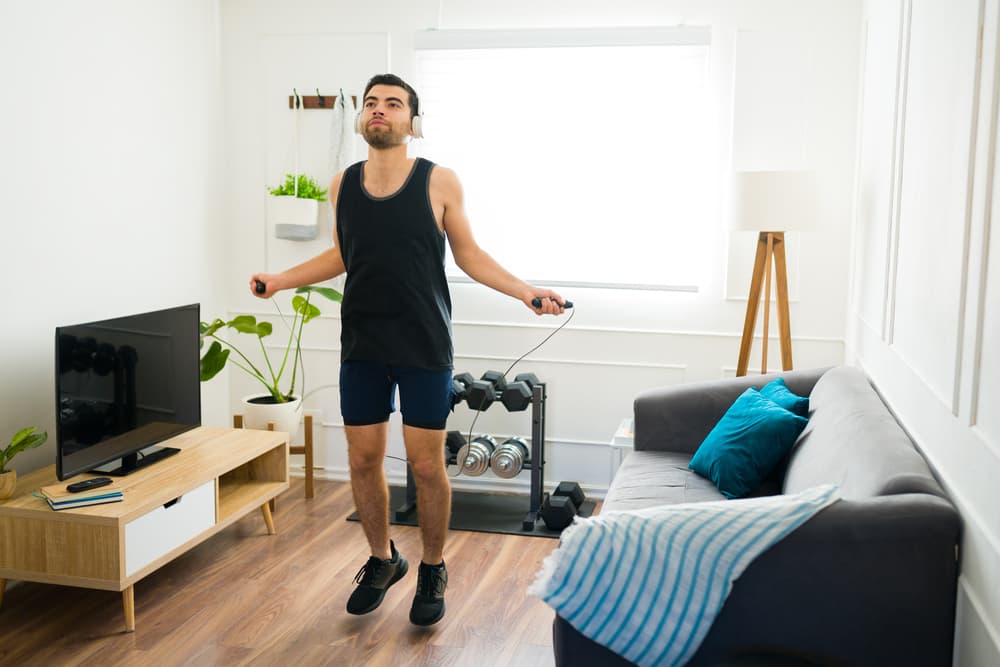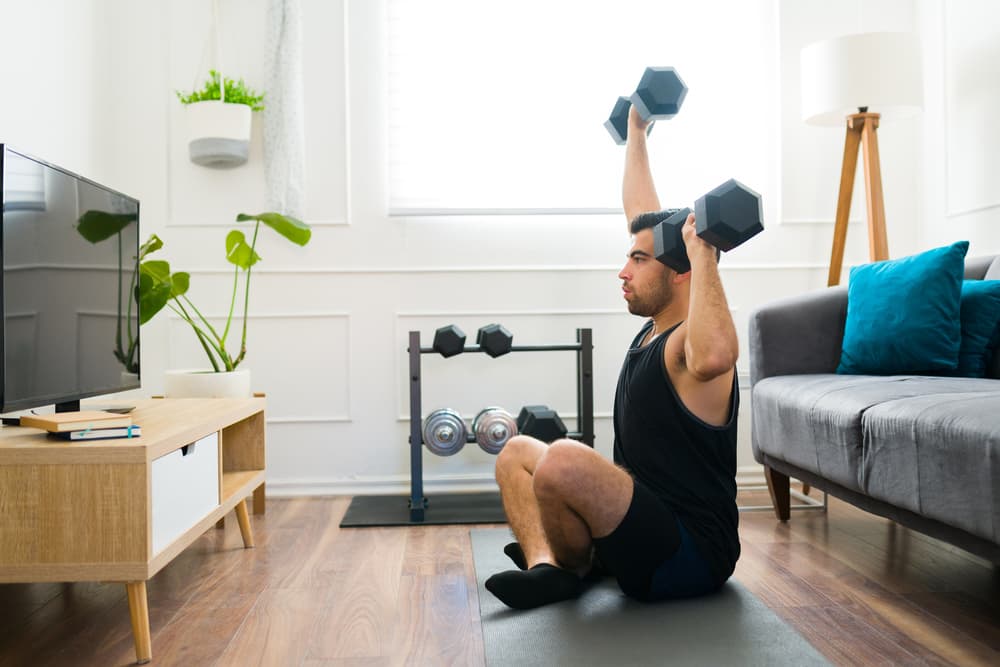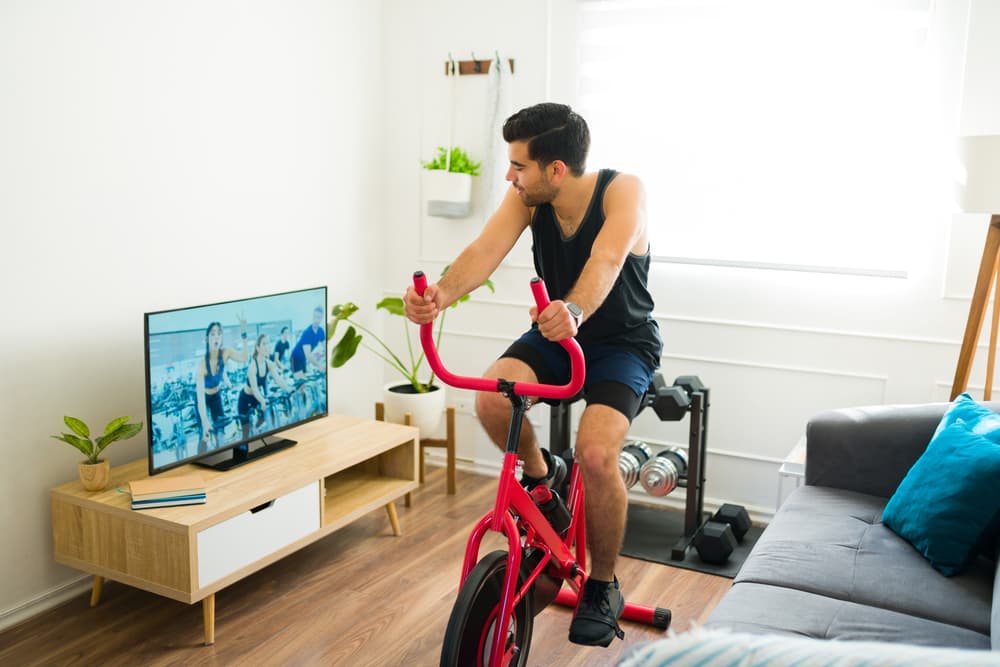Setting up a home gym in a small space is not as difficult or expensive as you think. You only need to be creative in maximising your workout area, choosing your equipment, and adding practical fixtures.
So, don’t be disheartened.
Here’s a step-by-step guide to help you start your fitness journey in the privacy and comfort of your home.
Steps in Setting Up a Small-Space Home Gym
Visiting a commercial gym is perhaps the easiest way to get your physical activity requirements for the week.
But, for various reasons, people find exercising at home better. Some find it more convenient, while others think it is more cost-efficient.
Pandemic-conscious gym-goers now prefer online workouts or hybrid set-ups, too.
While working out at home is fun and equally effective as gym workouts, space, or lack thereof, can be a problem.
Then, there’s also the cost and time required for an at-home gym project. A home gym doesn’t have to be large and grand, though.
After all, your body will happily burn calories, whether you’re rope jumping in one corner or lifting dumbbells in another.
Follow these steps to start planning.
1. Determine your fitness goals
You need to identify your fitness goals early since these will determine your workout space and equipment.
Do you want a home gym to lose weight or build up strength?
You can start from here. Then, determine how you intend to achieve your specific goal.
Are you a fan of floor exercises? Do you enjoy working out with a cardio machine? Is weightlifting your thing?
Answering these questions will help you find the ideal workout spot and avoid splurging on home gym equipment you do not need.
This list of easy workouts for small spaces might help and give ideas, too.

2. Look for the right space
Building a home gym in a small space like a tiny house, apartment, or condo can be challenging but not impossible.
You’ve probably had a few unnoticed spots at home with high gym space potential. So, look around and consider the following areas:
- Your bedroom or study: This space may be small, but it offers the privacy you need for a home gym. It’s also the best place to avoid uneasiness or disruptions while working out, especially if you’re living with family or roommates.
- Your mini porch, balcony, hallway or living room: These are excellent for floor exercises, dancing or yoga. Go for the least furnished spot or an area with moveable furniture.
- A vacant corner next to a window: Exercising with a view is one way to enhance your overall workout experience. Also, if you work out during the daytime, windows let natural light in, creating a bright, roomy small-space home gym. An area with mirrors on the wall has the same effect, too.
- An area with light-coloured walls: Whites and light neutral shades transform any tight space into a spacious room. So, look for something similar for your home gym. Or you can add wall painting to your task list if your budget allows it.
3. Create your workout area plan
You may be the only one who’ll use your home gym.
However, making this space orderly, comfortable and stylish should still be part of your to-do list.
After all, a clean and personalised workout area helps you stick to your fitness routine.
So, what are the factors to consider when planning your chosen workout space?
I suggest starting with your gym floor plan and assigning areas where everything will go.
Having a place for everything is vital in keeping your small-space home gym clutter-free.
Keep your gym design simple and accessible, too.
Also, make your gym essentials blend in with your interiors to prevent creating an eye sore.
Choose equipment colours, designs and sizes wisely.
Next, think about storage. Since you have limited space, consider getting multipurpose storage solutions.
For example, use an ottoman with a removable top or a shoe rack for vertical storage.
Your TV stand or bookshelf can also double as cabinet space for small gym essentials.
If you’re working out in your living space or bedroom, use a compact organiser for storing things under your couch or bed.

4. Decide on how much to invest
One of the top things that make people hesitant about setting up a small gym space at home is the initial investment.
But this will not be a problem if you’ve done the first step: determine your fitness goals.
With this in place, you can look for space-saving, affordable equipment and machines that provide the same results.
For instance, a power rack for bodybuilding is expensive and can take up so much space.
However, a smaller squat rack and an adjustable bench are compact alternatives with similar functions.
Deciding on your home gym budget should also match your fitness dedication.
For example, if you are a casual gym-goer, a budget gym set-up may suit you best.
But if you are into workout variety, you might want more exercise equipment that fits your space.
5. Gather your exercise equipment
Once you have your goals, gym plan and budget limit settled, time to buy exercise equipment for your small-space home gym.
I suggest looking for options online or in-store, then take note of their features, product dimensions, brands, prices and other similar factors.
Reading exercise equipment reviews and buying guides helps, too.
To help you further, here’s a list of fitness equipment and machines that suit small home gym spaces:
- Jump ropes are great for total body workouts, cardio, high-intensity interval training (HIIT) and fat loss. They are also very affordable, compact and portable.
- Resistance bands are versatile and space-saving exercise equipment for improving muscle strength and size. They have varying levels of resistance to match your requirements. Some portable home gyms also include these elastic bands.
- Adjustable dumbbells are excellent for small home gym space owners who love workout diversity. You can use a pair to perform several free-weight exercises or bench workouts.
- Kettlebells are ideal for dynamic moves that combine cardio and strength training.
- Pull-up bars, particularly doorway types, are perfect for small spaces and even low-ceiling homes.
- Yoga mats are a must if you are a yogi or someone into meditative fitness. An exercise mat is also handy for glute-toning and core-strengthening moves.
- Cardio machines like stationary bikes and foldable treadmills do not take up a lot of space. Ideally, choose lighter models, so you can move them after use if needed.

Conclusion
A small space for a home gym is not an issue if you keep your equipment choices as minimal and compact as possible.
For example, you can turn your living room into a multipurpose area by having exercise machines that you can move or fold post-workout.
Alternatively, choose smaller gym essentials that fit any cabinet or storage area.
With the right floor layout, lighting, simple décor and some creativity, you can have a functional workout area anywhere at home.
Related Questions
1. How much does it cost to set up a home gym in Australia?
Your home gym expenses largely depend on the fixtures and equipment. According to Refresh Renovations, a budget home gym space with simple machines, flooring, lighting, and air-conditioning unit costs around $4500 to $9000.
2. What is the best home gym equipment for beginners?
A combination of fitness equipment for cardio and strength training is best for beginners. It’s best to get versatile ones, like dumbbells and pull-up bars, that let you perform multiple exercise variations. Also, choose space-efficient and affordable machines, like a foldable treadmill or exercise bike.
- What Are the Advantages and Disadvantages of Folding Treadmills? - 11 March 2025
- Can You Use a Massage Gun When Pregnant? - 10 March 2025
- What is the Best Pre-Run Food? - 6 March 2025
